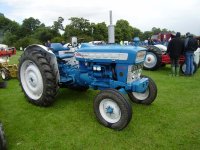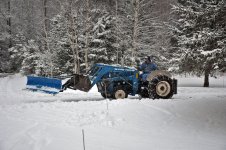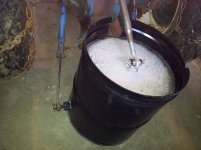Toronto Turbo
New member
Read on the forums the Ford 400 has a diff lock..................Where is the location and how do you operate it?
My traqctor I think is a 1971 Ford 4000 3 cylinder gas, appears to be an industrial, with a class II hitch, front loader with from PTO pump.
1/2" of snow in the driveway aqnd I am getting stuck in reverse with just one wheel spinning.............I even have a few loops of chain around the tire.
My traqctor I think is a 1971 Ford 4000 3 cylinder gas, appears to be an industrial, with a class II hitch, front loader with from PTO pump.
1/2" of snow in the driveway aqnd I am getting stuck in reverse with just one wheel spinning.............I even have a few loops of chain around the tire.



